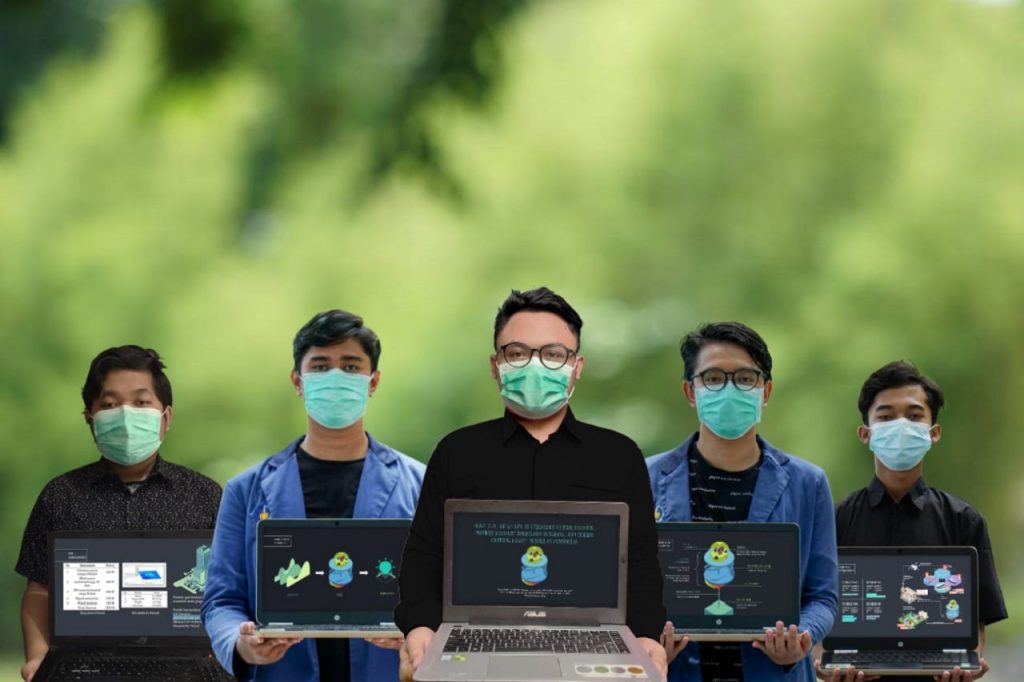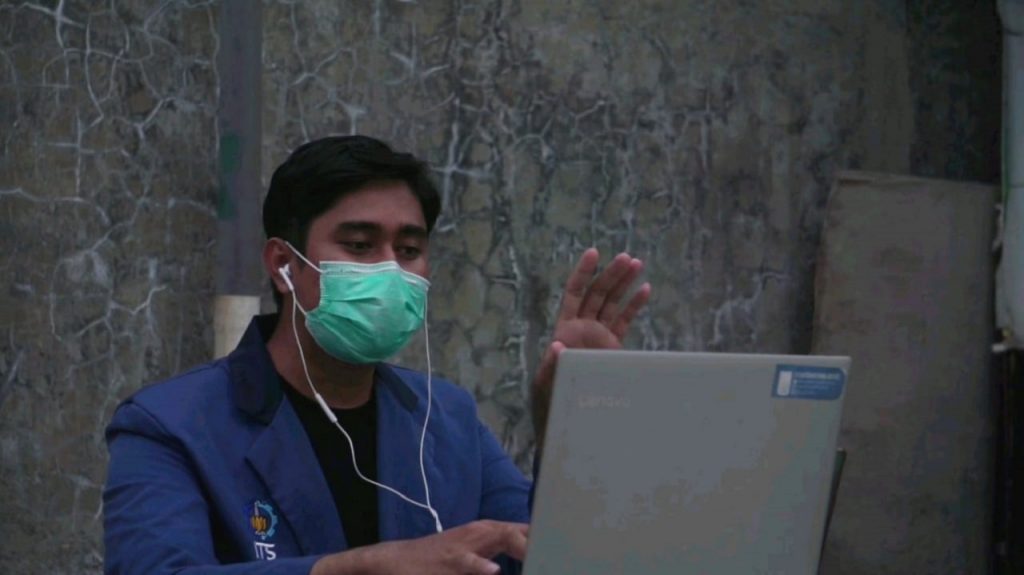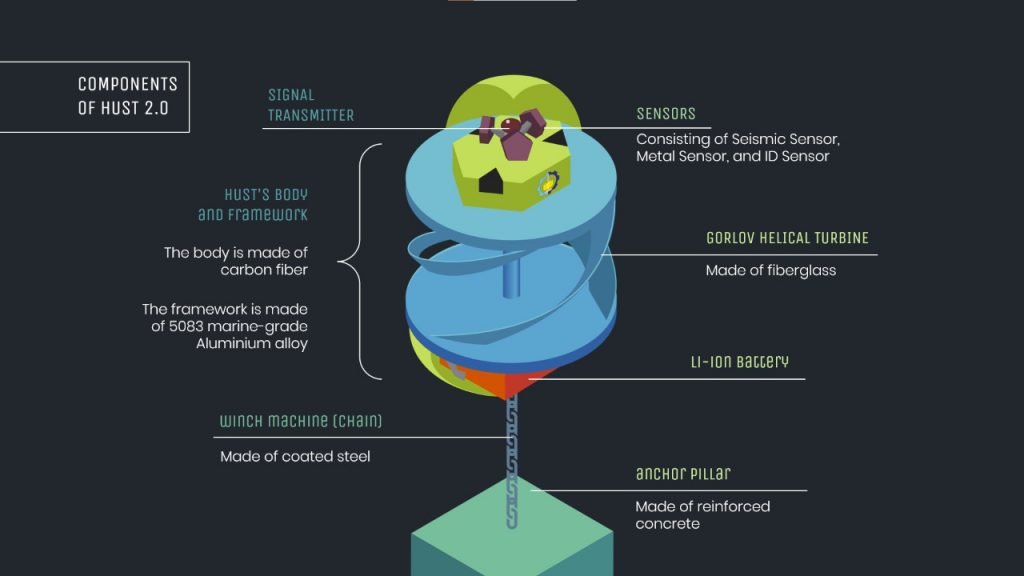Underwater Sensor Technology by ITS Students Receives Two Awards

(from left) Ghifari Hanif Mustofa, Edo Danilyan, Wildan Muhammad Mursyid, Ahmad Fahmi Prakoso, and Aldiansyah Wahfiudin showing the prototype of HUST 2.0
ITS Campus, ITS News – Achievements for the sake of achievement are constantly being obtained by the Sepuluh Nopember Institute of Technology (ITS). This time, it was the turn of five ITS students who won the Gold Medal and Best Impact Award at the Indonesia Inventors Day (IID) 2020 in the International World Invention and Technology Expo (WINTEX) category which was held online for three days, last week.
They are Wildan Muhammad Mursyid (Material Engineering 2017), Ghifari Hanif Mustofa (Mechanical Engineering 2017), Ahmad Fahmi Prakoso (Material Engineering 2018), Edo Danilyan (Biology 2018), and Aldiansyah Wahfiudin (Material Engineering 2018). Working together as a team, the five won two awards at once, namely the Gold Medal and Best Impact Award at the international event.
Wildan Muhammad Mursyid, the team leader, said that his team’s innovation work was called Humanless Underwater Sensors Technology (HUST) 2.0. This tool is an innovative underwater sensor technology that is applied to Indonesian border waters. This tool turned out to be a development of the first version of HUST, which also won a Gold Medal at the 2020 World Invention and Competition Exhibition (WICE).

Edo Danilyan, a member of the ITS student team, when presenting his team’s HUST 2.0
Wildan said, in this second generation, HUST has an additional function that can help community problems, especially in marine waters. The additional function is HUST 2.0, which can be used as a power generator. This causes HUST 2.0 to function as detection of illegal fishing vessels and an earthquake detection system like the first version. In this latest version, HUST 2.0 utilizes ocean currents as alternative energy to produce electrical energy.
Starting from coastal communities who are still complaining about the availability of electricity in their environment, making them mix pre-existing problems with new problems in the same tool. “With this additional feature in HUST 2.0, the electricity needs of people in coastal areas can be met,” he said.
The student from Klaten revealed that not as smooth as it seems, the development of HUST 2.0 also experienced several obstacles. For example, such as a system of electricity distribution lines to a coastal area that must be under the sea and have a long-distance, energy loss is possible. “This makes us still need to research and develop this tool so that the concept of ocean current power plant (HUST 2.0) can be applied optimally,” he said.
Feeling confident, for the second time Wildan and his team decided to contest their work again. Indonesia does not yet have a technology development tool that combines the three functions such as underwater sensors, marine disaster detection, and ocean current power plants. “This makes us believe this innovation can be accepted by the wider community and also the jury so that it can win again,” he said optimistically.

The prototype of HUST 2.0, which has successfully won two awards at once
Against 345 teams from 15 countries, HUST 2.0 appeared with a working mechanism almost the same as before. This similarity can be seen from the earthquake sensors to detect seabed vibrations, metal sensors to detect approaching ships, and ID sensors to detect Transmitter ID to prevent illegal fishing.
As for power generation, HUST 2.0 uses the Gorlov Helical Turbine concept, which utilizes ocean currents to rotate the turbine grille. “The electrical energy produced is used to meet the energy needs of HUST 2.0 and electricity needs in coastal areas,” he explained.
This alumnus of SMA Negeri 1 Sukoharjo hopes that HUST 2.0 can help Indonesian people, especially in coastal areas. He also wants to contest his innovative work again in other competitions to strengthen HUST 2.0’s usefulness further. “We will continue to carry out research and development for this tool,” he said. (dil/man/ITS Public Relations)
Related News
-
Achieving a GPA of 3.82, Septia Becomes the Best Graduate of the ITS Applied Bachelor’s Degree
ITS Campus, ITS News — Not only from the regular undergraduate (S1) program, but the applied undergraduate (D4) program at
December 04, 2020 15:12 -
Supporting the Development of Material Processes, ITS Professors Utilize Biomass Waste
ITS Campus, ITS News — Innovation in material processes continues to develop to support society’s need for environmentally friendly
December 04, 2020 15:12 -
ITS Professor Ideas for Bio-Corrosion Control in Marine Structures
ITS Campus, ITS News — Coastal and offshore buildings interacting directly with seawater trigger damage, including bio-corrosion. If not
December 04, 2020 15:12 -
ITS Launches the First Marine Floating Solar Power Plant Prototype in Indonesia
ITS Campus, ITS News — Institut Teknologi Sepuluh Nopember (ITS)‘s commitment in realizing the energy transition is getting serious.
December 04, 2020 15:12
